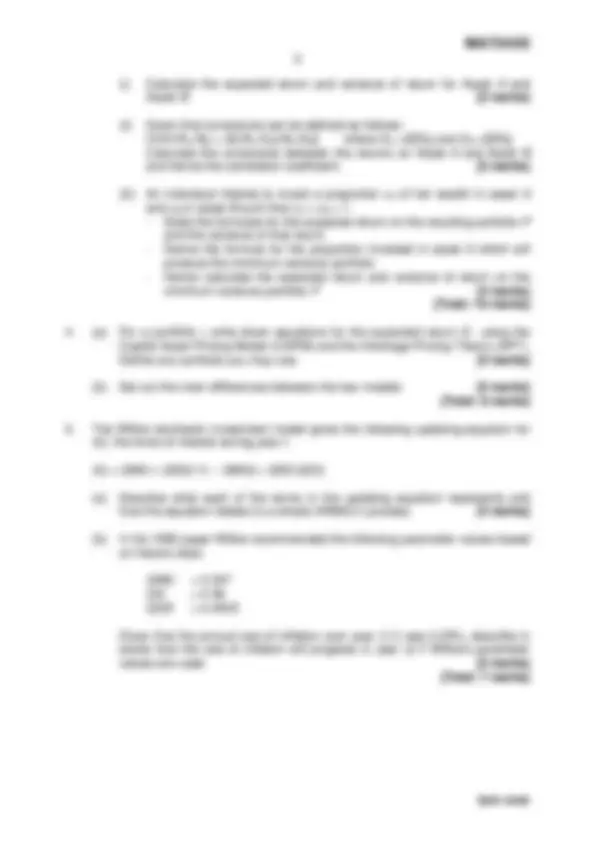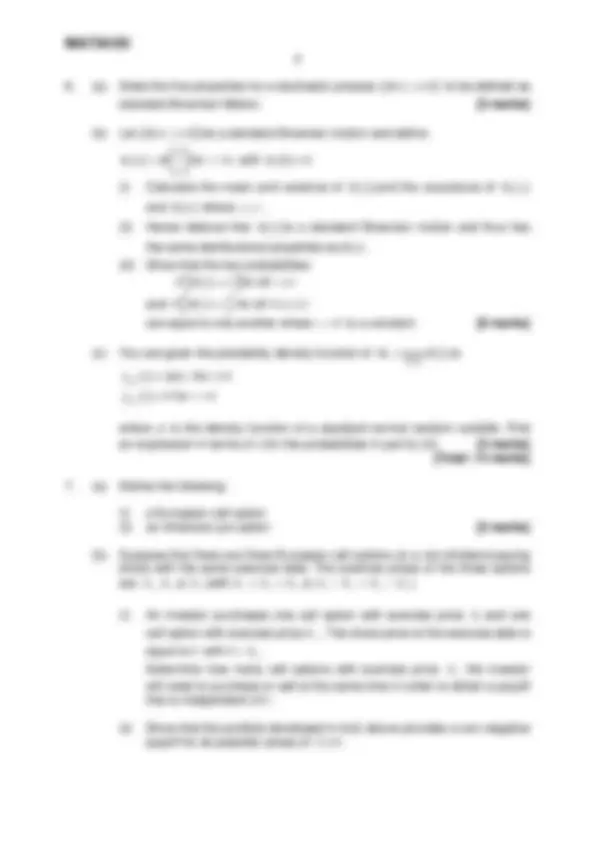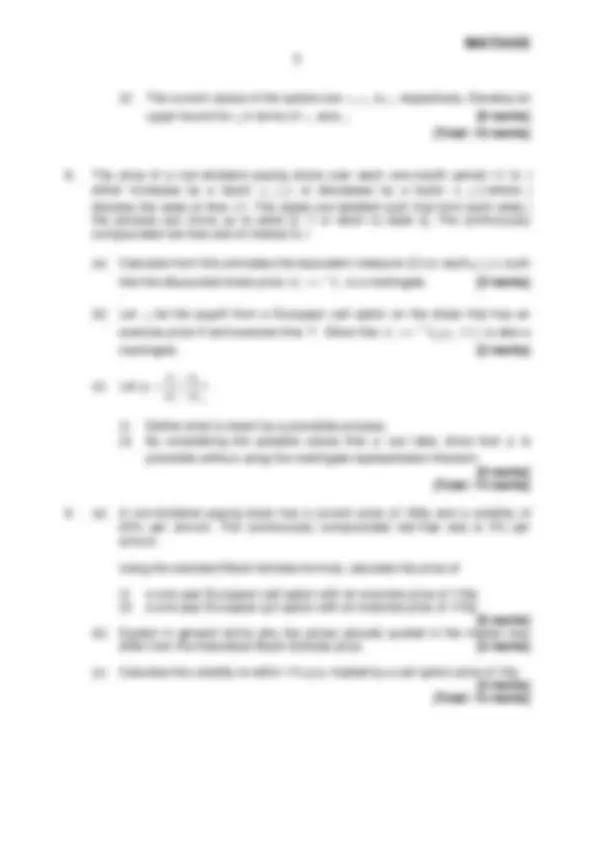





Study with the several resources on Docsity

Earn points by helping other students or get them with a premium plan


Prepare for your exams
Study with the several resources on Docsity

Earn points to download
Earn points by helping other students or get them with a premium plan
Community
Ask the community for help and clear up your study doubts
Discover the best universities in your country according to Docsity users
Free resources
Download our free guides on studying techniques, anxiety management strategies, and thesis advice from Docsity tutors
Professor Malcolm Brown, University of Kent, Statistics and Economics, Financial Economics, Exam 2005, FACULTY OF SCIENCE, TECHNOLOGY AND MEDICAL STUDIES, Efficient Markets Hypothesis, informational inefficiency, Variance of return, Semi-variance of return, Shortfall probability, Expected shortfall, optimal portfolio, Wilkie stochastic investment model, standard Brownian Motion, previsible process, standard Black Scholes formula.
Typology: Exams
1 / 5

This page cannot be seen from the preview
Don't miss anything!




turn over
This paper contains NINE questions. Answer ALL questions. The marks allocated are shown at the end of each question.
Copies of Formulae and Tables for Actuarial Examinations are provided. Approved calculators may be used.
(b) Briefly outline five examples of effects that have been claimed to exist in stock markets that might be considered examples of informational inefficiency. [5 marks]
(c) List the reasons, with brief explanations, why it is difficult to assess empirically whether or not the market is efficient. [4 marks] [Total: 13 marks]
(a) Variance of return
(b) Semi-variance of return
(c) Shortfall probability
(d) Expected shortfall [Total: 6 marks]
(i) opportunity set (ii) efficient frontier for a portfolio of risky assets (iii) indifference curves (iv) optimal portfolio [7 marks]
(b) In the city state of Metaphoria, there are two assets (Asset A and Asset B ) available to investors. There are four possible (non-independent) investment outcomes over the investment period, as follows:
Outcome Return on Asset A (RA)
Return on Asset B (RB)
Probability
standard Brownian Motion. [3 marks]
B t tB t
(iii) Show that the two probabilities:
are equal to one another where c > 0 is a constant. [8 marks]
0 1 max t M B t ≤ ≤ = is:
an expression in terms of c for the probabilities in part b) (iii). [3 marks] [Total: 14 marks]
(i) a European call option (ii) an American put option [2 marks]
(b) Suppose that there are three European call options on a non-dividend paying share with the same exercise date. The exercise prices of the three options are X (^) 1 , X 2 & X 3 (with X (^) 1 < X 2 < X 3 & X 3 − X 2 = X 2 − X 1 ).
(i) An investor purchases one call option with exercise price X 1 and one call option with exercise price X (^) 3. The share price at the exercise date is equal to S with S > X 3. Determine how many call options with exercise price X (^) 2 the investor will need to purchase or sell at the same time in order to obtain a payoff that is independent of S.
(ii) Show that the portfolio developed in b)(i) above provides a non-negative payoff for all possible values of S ≥ 0.
(ii) The current values of the options are c 1 (^) , c 2 & c 3 respectively. Develop an upper bound for c 2 in terms of c 1 and c 3. [8 marks] [Total: 10 marks]
(a) Calculate from first principles the equivalent measure Q (i.e. each qt ( j )) such that the discounted share price Dt = e − rtSt is a martingale. [3 marks]
(b) Let cT be the payoff from a European call option on the share that has an exercise price K and exercise time T. Show that E (^) t = e − rTEQ [ cT | Ft ]is also a martingale. [2 marks]
(c) Let 1
1 −
− −
t t
t t t D D
(i) Define what is meant by a previsible process.
previsible without using the martingale representation theorem. [9 marks] [Total: 14 marks]
Using the standard Black Scholes formula, calculate the price of
(i) a one year European call option with an exercise price of 110p (ii) a one year European put option with an exercise price of 110p [6 marks] (b) Explain in general terms why the prices actually quoted in the market may differ from the theoretical Black-Scholes price. [2 marks]
(c) Calculate the volatility to within 1% p.a. implied by a call option price of 10p. [4 marks] [Total: 12 marks]